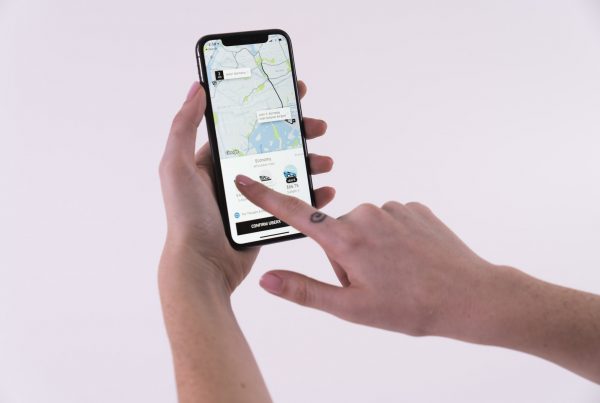While the benefits of using fleet management software have been detailed in previous posts, how exactly does Pantonium work? There are many components to Pantonium’s software, a key element being route optimization capability. As fleet management optimization involves minimizing many different constraints at any time, the process can be very complex to detail comprehensively. With this in mind, we will examine the optimized planning algorithm used by Pantonium and explain how it works. To begin, we recommend taking a look at the terrific learning module set up by the brilliant folks at KhanAcademy.org; the intro section details route-finding and other practical applications for algorithms in our lives.
The optimized planning algorithm used in the Pantonium system is specialized in handling transports with pick-up and drop-off locations, including patient transfer, lab sample transport, and other areas of transportation. Highlights for the algorithm include the ability to handle three kinds of people transport: ambulatory, stretcher, and wheelchair. The ability of this algorithm can be extended to other transports as well.
The algorithm is designed to handle transports with time windows where being on-time is critical. It is also designed to consider different characteristics of different vehicles. For example, the algorithm automatically matches riders who cannot handle high vehicle with vehicles which are not high , and it matches riders who need lift-assistance with vehicles equipped for it. The characteristics are flexible and easy to configure by the user. Also, the algorithm handles capacity intelligently, allowing a vehicle with multiple configurations to be used optimally. Riders can be grouped into different mutually exclusive groups and the algorithm will separate the riders accordingly.
The algorithm is also very efficient and fast. A planning session with 19 vehicles and 100 transports might take a few seconds to find the first feasible plan, where all transports can be handled on-time, and a few minutes to make further improvements perhaps 50% shorter mileage. As the algorithm looks at the transports globally, it will sacrifice small local inefficiency to achieve greater efficiency over all.
This can be overwhelming to those unfamiliar with fleet management software, so please allow us to detail an analogy for the Pantonium algorithm. Suppose one was to be randomly dropped somewhere in the Pacific Ocean, and their goal was get to the highest mountain peak blind-folded. This can only be done using a sensor measuring how high you are relative to the sea-level, with a set amount of time. So, the idea is not to find the actual tallest mountain peak, as this will require too much time; instead, find the tallest possible mountain peak given the time provided.
We measure the height of a mountain peak relative to the sea-level. So, a tall mountain peak under-water is still a mountain peak under water; relative to the sea level, it still has a negative height. Of course, the chance of being dropped on an island is exceedingly small. Most likely, you will be dropped under water. However, whether you are dropped in the water or on an island, the algorithm will guide you to the tallest mountain peak which can be found within the time provided.
The simplest strategy is to find which direction is up and then take a step in this direction. Repeat this until you are at a point where all directions are down. Chances are, this is not the tallest mountain peak in the Pacific. In fact, chances are it is still under water, as there are a lot more mountains peak under water than above it in the Pacific. The Pantonium algorithm, after getting to a mountain peak, chooses a direction to go down, other than the steps it takes to come up to the peak. It will climb down to a depth which can be customized, and then try to climb up again.
Sometimes, even with this strategy, it is possible to get stuck on the same mountain peak over and over again, climbing down and then up a different direction, only to get to the same peak again. The Pantonium algorithm monitors which spot it repeatedly gets on, and if this spot is stepped on too many times, it will choose a different direction to continue when it reaches the spot again.
The first step toward reaching a mountain peak is a local optimization technique. Humans tend to do it all the time, and then stop at the first mountain peak. Perhaps a more sophisticated person will note down the first mountain peak, and then start again and choose a different direction to see if it leads to a different mountain peak. Choosing the different direction requires foresight of more than one step. The Pantonium algorithm chooses a different strategy of getting to a different mountain peak from the previous mountain peak as it can re-use much of what has been done; the terrain is already familiar to the algorithm.
There are several other factors which go into determining the end result of Pantonium’s optimization process. This analogy is to help establish a reference point for how exactly the algorithm works to help determine the best course of action for vehicle dispatch. . To find out more, please feel free to contact us any time at info@pantonium.com and be sure to check back for more posts detailing our optimization process.



